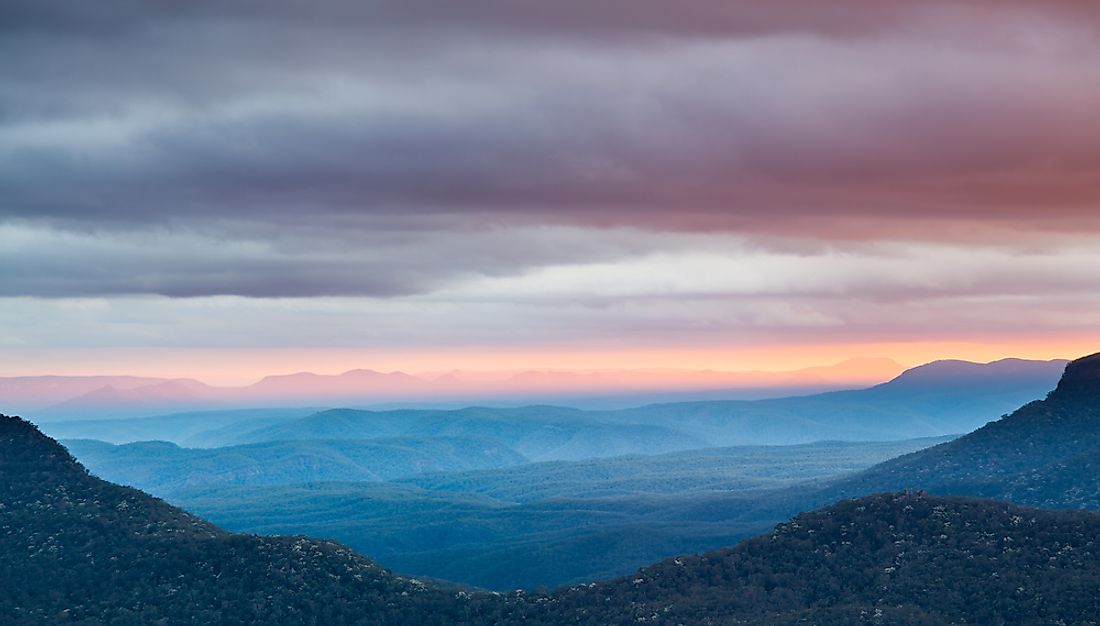Australian Landmarks: Blue Mountains

The Blue Mountains in Australia lie in the state of New South Wales. The area features a mountainous region and a range. The Blue Mountains form part of the vast mountainous region of the Great Dividing Range, and contains the Explorer Range and the Bell Range. Vast plateaus, escarpments, and a range of mountains are key compositions of the Blue Mountains. The Blue Mountain area is widespread and totals nearly 3,900 square miles.
Description
The highest peak in the Blue Mountain is unnamed. It lies on the northeast of Lithgow, with an elevation of 3,901 ft. Several rivers border the Blue Mountains on different sides, including Nepean, Coxs, and Hawkesbury. Several prominent towns rest on the Blue Mountains, including Katoomba, Blackheath, Mount Victoria, and Springwood. The Great Western Highway and the Main Western Railway line transverse through nearly two thirds of its length.
Naming
The Blue Mountains derived its name from the blue tinge the range appears to have when viewed from afar. The abundant Eucalyptus trees in the Blue Mountains emit volatile vapors’ to the atmosphere, which encounter the incoming light of shorter wavelength to give a blue-grayish appearance to a distant object.
History
Aborigines had inhabited the Blue Mountains for thousands of years before the arrival of the Europeans. The evidence of this habitation include the native hand patterns in Red Hands Cave close to Glenbrook. Carved images of animal tracks and an occupation cave are other examples. These can be found in a site named Kings Tableland Aboriginal Site, which dates back 22,000 years.
Climate
The Blue Mountains climate is varied. At Katoomba, for example, the summer maximum average temperature is 22°C with a few days extending to 30°C. During winter, the average temperature is around 10-11°C during daytime, with slight variations at night. Compared to other regions on the central Tablelands, the Blue Mountains do not have very cold mornings. Generally, there are two to three snowfalls per year, though settled snow has become less and less common in recent decades. However, one will find warmer climates in the lower parts of the mountains. The average annual rainfall in the Blue Mountains is 1,050 millimeters. Mist mainly appears in the upper mountains.
Tourism
Every year, thousands of tourists visit the Blue Mountains to behold the unique beauty of nature. The most predominant natural vegetation is the eucalyptus forest, although other vegetation is also present. The Blue Mountains are dotted with many peaks making it a spectacular tourist attraction site. Tourists can take part in numerous recreational activities. Adventure sports, such as rock climbing, mountains biking, hiking, as well as canyoning are very popular at the region. Over 400 different types of animals inhibit the area, including the spotted-tailed quoll. On November 29, 2000, UNESCO listed the Greater Blue Mountain Area as a World Heritage Area.







